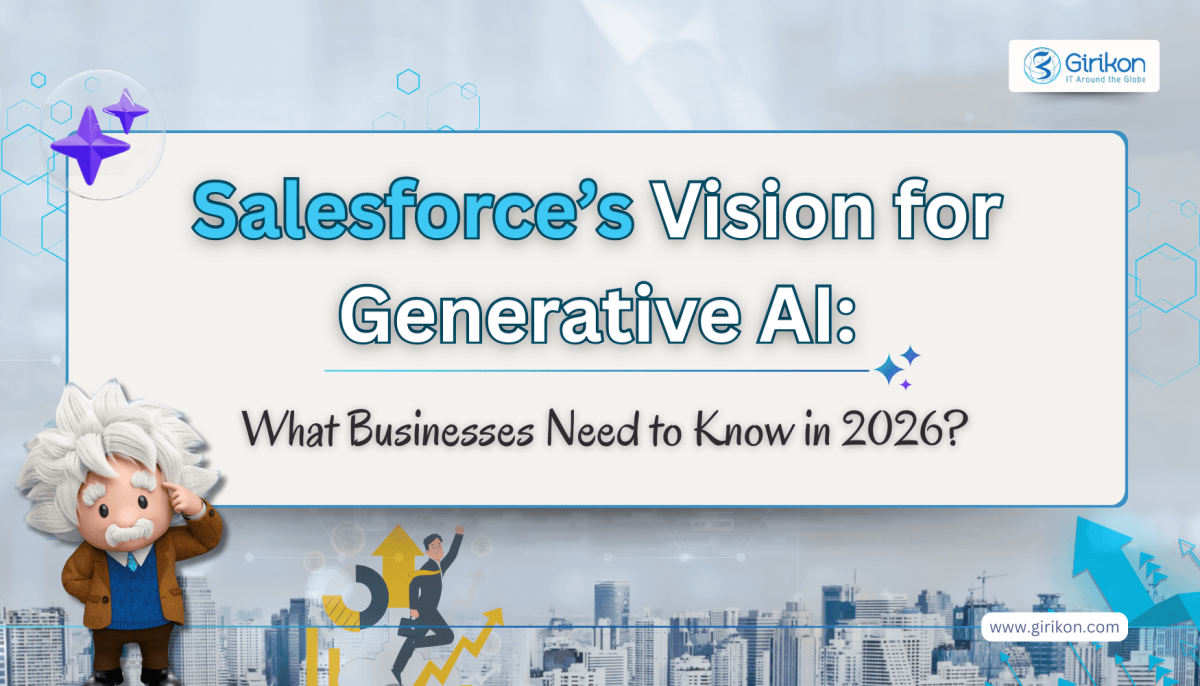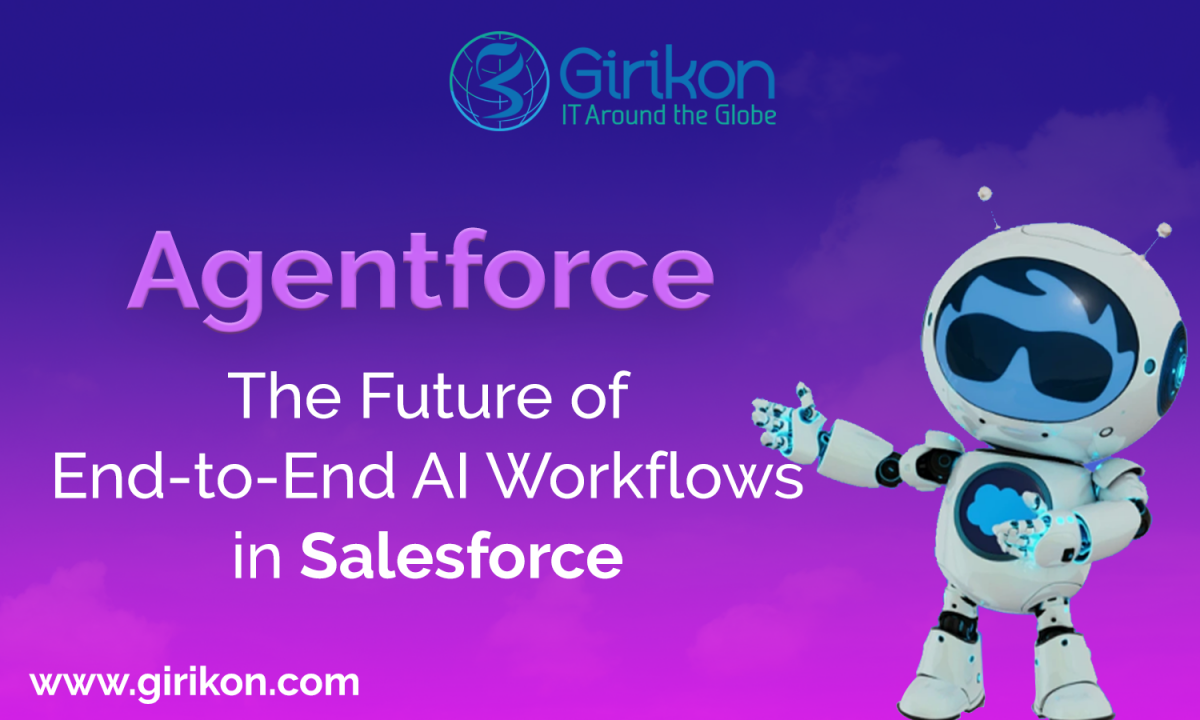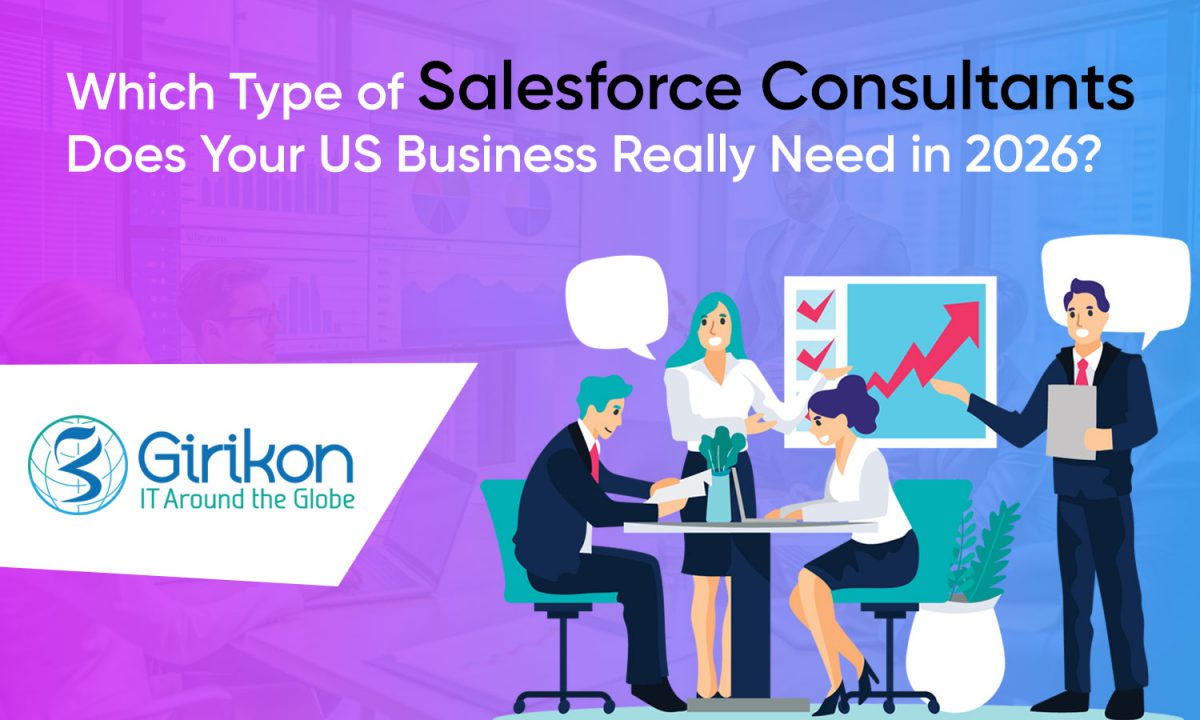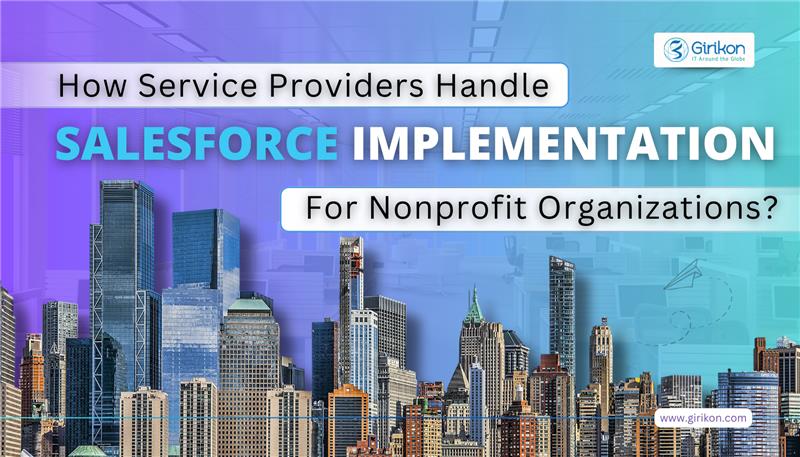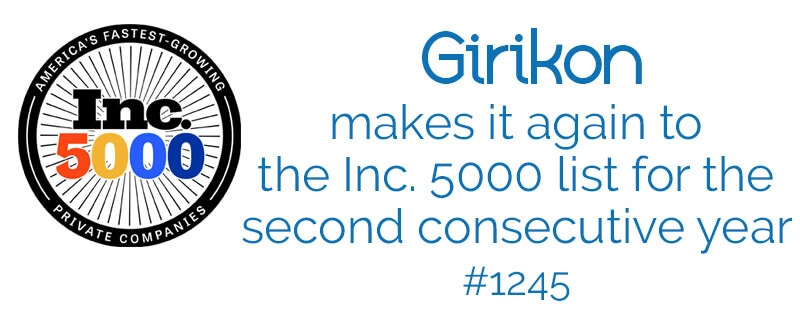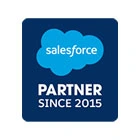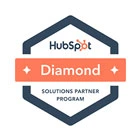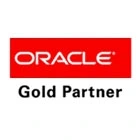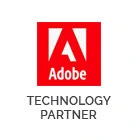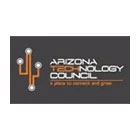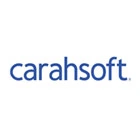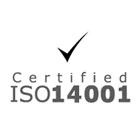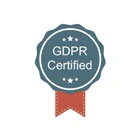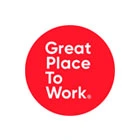Retailers need to come up with innovative strategies to attract and retain customers in the rapidly expanding e-commerce era. For this reason, in recent years, more retailers have resorted to SMS marketing.
The advantages of using retail SMS, how to begin retail SMS marketing and real-world SMS marketing campaign examples will all be covered in this article.
Benefits of SMS marketing for retail
When using SMS in retail marketing, businesses will experience a number of benefits. Here are some of them:
Higher open rates. SMS messages have a staggering 98% open rate. The open rate of emails is 20%. Users feel compelled to read SMS messages because they are sent directly to their mobile phones.
Higher conversion rates. Well-crafted SMS campaigns have shown to be about 6 times more effective than email marketing when it comes to conversions.
Instant delivery. It takes little time to send, receive, and read text messages. Most texts are read within a few minutes of being sent, according to research. Because of this, text marketing works well for communications that need to be sent quickly.
Seamless integrations. Integrating modern business texting platforms with your existing marketing systems is easy. This enables merchants to develop an omnichannel strategy and synchronize data across platforms.
Improved customer engagement. Research indicates that 45 % of people respond to SMS texts. Because of this, it's a great way to get feedback from customers and have two-way interactions.
How to utilize SMS marketing in Retail
SMS marketing can assist retail establishments in overcoming some of their most significant obstacles by increasing sales and interacting with their target audience. Let's examine a few typical ways that SMS can benefit merchants.
Reduce excess inventory. To instill a sense of urgency and motivate customers to buy things and clear out old inventory, run a text campaign promoting a flash sale.
Discounts. Distribute time-limited sales or discount coupons on old inventory or slow-moving products.
Personalized offers. Use text messaging campaigns to interact with loyal customers, offering them tailored deals and incentives to buy seasonal or near-expiration products.
Events. To get the product off the shelf, advertise an in-store event.
Low inventory warning. Inform customers when a certain product is almost gone so they can buy it before it sells out.
Back-in-stock alert. Notify customers who have joined a waitlist or indicated an interest in particular products when they become available again.
Product alternatives. When a certain item is out of stock, let customers know about other similar products so they can still buy it and not get frustrated.
Pre-order opportunities. Notify customers of impending product releases or pre-order possibilities so they can reserve the things they want ahead of time.
Product launch. Create anticipation by informing customers when a new product will be available in stores. Send your contacts a catalog or sneak peek to pique their attention.
In-store sales. Throughout the year, run special sales, particularly around the holidays. One of the best ways to boost traffic and encourage purchases is through Black Friday text marketing.
Improve customer satisfaction. To learn more about your customer satisfaction levels and pinpoint areas for development, send a text survey.
Brand surveys. To find out what your consumers like, what intrigues them, and what products they would want to see more of in your retail business, you can also send them a survey.
Order updates. Keep customers updated about their order status. Notify them of any delays or changes they should be aware of, as well as when an order is prepared for collection.
Customer support. Utilize SMS to proactively respond to consumer questions or concerns, offering timely, personalized assistance to improve the overall customer experience.
Retain more customers. Establish an SMS loyalty program that encourages repeat business and builds customer loyalty by giving customers access to exclusive offers, prizes, or points for their purchases.
Personalized content. On their birthdays or anniversaries, send customers personalized texts expressing your gratitude and providing exclusive deals or prizes.
Re-engagement campaigns. Sending tailored offers or reminders to dormant or inactive contacts via SMS can rekindle their interest in your brand.
Retail SMS Marketing Best Practices
By using these best practices, your SMS marketing campaigns can generate insane levels of engagement:
Obtain explicit consent
Before sending SMS messages, we get users' express and unambiguous consent. The following are some excellent practices for SMS opt-in:
Express written consent. Use online forms to get explicit consent before sending marketing SMS texts.
Give recipients a clear way to opt-out. In order to improve your brand’s reputation, include the option to unsubscribe in every SMS.
Log all opt-ins and opt-outs. This facilitates the creation of a customer list for SMS messaging.
Indicate the goal and frequency in clear terms. Terms and conditions (T&C), privacy policy, and other information might be included to clearly indicate the frequency of communications and their intended use. If you don't currently have a terms and conditions paper, think about using a template.
Create a strong subscriber list.
In order to reach contacts and boost opening rates, the subscriber list is carefully vetted. The following text marketing advice will help you build the perfect list of subscribers for your SMS campaigns:
Spread the word about your SMS campaign to the different subscribers via social media and email.
Incentivize sign-ups on your social media page.
Add an invitation to pop-up ads.
At checkout, invite customers to join.
Segment audiences to improve targeting
In SMS marketing, audience list segmentation efficiently targets and boosts engagement. Here are some ways to effectively segment your contact list.
Demographic segmentation: By location, gender, and age.
Behavioral segmentation: Segment them based on browsing habits, engagement levels, and past transactions.
Transactional segmentation: Segmentation based on purchasing patterns, frequency of purchases, and recent buys.
Engagement segmentation: Segmentation based on click-throughs and sign-ups.
Event-based segmentation: Sending offers via SMS makes a stronger impression if you know any information about your contacts or their milestones, birthdays, or other significant occasions.
Make your content Relevant, Valuable, and Unique.
The text marketing copy should be interesting, even if the SMS is a sales message. SMS marketing copy should be based on 3 key criteria.
Relevance
Sending pertinent information improves targeting and reach, just like it does on any other marketing platform. As we mentioned earlier, there are various ways to develop audience segments. Give prospective customers options for choices for products and services according to their preferences.
Value
Think of your SMS recipients as VIPs. You can contact your subscribers directly at any moment by using the phone numbers they provide you. You can successfully increase the value of your SMS by providing early access, exclusive offers, or notifications about the debut of new products or services.
Uniqueness
SMS messages have a 160-character limitation, so they should always be succinct. You can mention a unique purchase, like a pair of snow boots, that they ought to think about purchasing.
Personalize your messaging
SMS campaigns are special because they mix the best aspects of one-on-one contact with the convenience of mass marketing. Here, personalization calls for a different strategy than email. SMS requires dynamic content that changes according to the user's activity, providing updates and special offers, etc. 80% of customers buy from brands that deliver a personalized experience.
Show off your brand
When recipients are unsure of the source of the text, they are less likely to click on the link. Making reference to your business or organization is another aspect of SMS compliance. To spread brand awareness, you can mention your brand or business name at the beginning of the SMS or send a virtual contact card to make it easy for recipients to correctly identify the sender and the brand.
Provide exclusive offers
Exclusive offers distributed via SMS are a proven method of growing the list of subscribers. Creating a sense of urgency, tailoring the offers, offering unique access and incentives, etc. are some strategies to make special offers that appeal to your audience.
As a CTA, always provide a link.
Direct communication via SMS increases opening and conversion rates. To make it simpler for interested receivers to visit your website, include a link in your texts. Without the link, prospects may not understand the message. Nonetheless, there are some efficient methods for including links in your SMS texts that you ought to adhere to. This includes avoiding sending links at the beginning of an SMS and providing only one link which is typically the Call To Action at the end of the text.
Include multimedia in your SMS
Your campaigns can become more dynamic and effective with the help of the multimedia messaging service or MMS, which can also greatly increase interaction. Incorporating clickable links to videos, audio samples, and other material into SMS marketing is a very effective approach to employing multimedia to increase audience engagement.
Send SMS during regular hours.
SMS texts should ideally be sent during regular business hours. Being polite and non-intrusive to subscribers is important while using SMS marketing. For instance, they won't appreciate it if they get an SMS notification at 2 AM. Additionally, from the standpoint of engagement, consumers are less likely to use such a marketing strategy to deliver messages between the hours of 9 am and 8 pm. Instant action from your subscribers is just one of the many advantages. It is unlikely that anyone will act inappropriately around them during regular business hours.
Maintain consistency in messaging frequency.
Maintaining a regular messaging frequency is one of the greatest SMS marketing strategies. You are prepared to refrain from overwhelming subscribers with SMS texts. Sending too few or too many texts, however, will come out as unexpected and possibly hostile. A strong social media strategy may provide subscribers with consistent information, and successful SMS ads also stick to a regular and predictable timetable. Depending on the kind of business you are in, the schedule must change. For example, when a sale is imminent, you need to send out more than six SMS every day if you are an e-commerce marketer.
Invest in smart SMS marketing software.
Numerous advantages of SMS marketing software include improved targeting through sophisticated segmentation and personalization, increased engagement through greater open rates, and more. By facilitating smooth, personalized data classification, these interfaces can offer a cohesive marketing approach. The performance of SMS marketing can also be monitored with the help of data analytics tools. With only a few clicks, you can send tailored texts to every contact using GirikSMS, a robust SMS marketing platform, purpose-built as a native SMS for Salesforce app that offers all these functionalities.
Stay compliant
The dos and don'ts of SMS marketing are outlined in laws specific to the business's location. Be aware that over 40% of customers would rather get four to six communications every month. Depending on the location, spamming may result in legal violations.
Monitor and analyze performance.
Keep a handle on campaign performance. To find out what works with the audience, always look at analytics like click-through rates and open rates. GirikSMS, a native Salesforce SMS platform, provides comprehensive analytics and insights on your SMS campaign performance directly within the Salesforce environment.
Respond promptly to replies.
In SMS marketing, prompt responses to consumer questions and comments are essential for creating deep relationships between the brand and potential customers. Through their responses, subscribers can demonstrate your value-driven engagement and the effectiveness of your campaign. Here are several strategies to react quickly:
Configure automated responses.
Give priority to customer questions.
For frequently asked inquiries, use chatbots.
Establish targets for response times.
Personalize your responses.
Grow your retail business with GirikSMS.
Retailers can overcome typical marketing challenges, increase sales, and cultivate enduring consumer loyalty by leveraging the powerful business messaging features of GirikSMS.
Are you prepared to increase sales and enhance both in-store and external customer communication? Retail SMS marketing is easy to get started with thanks to GirikSMS's messaging platform. GirikSMS provides retailers with the tools they need, whether they want to have meaningful two-way interactions or reach a large number of customers at once. Sign up for free 30-day trial to test drive GirikSMS today.
table tr td {
padding: 10px;
}
Salesforce and ServiceNow are the two most popular platforms in the CRM and service management world—but choosing the best one really depends on the complexities your business is currently facing.
Many Salesforce consulting companies compare these platforms by using a simple relatable analogy or thinking of them as two different types of cars. Salesforce is your sleek, higher performance sports car, while ServiceNow is the all-terrain and dependable SUV. Both of them come with the fundamental features everyone needs—wheels, engines, seats, etc. (or in CRM terms, dashboards, integrations, and automation), but each is engineered for a different journey.
Just as you wouldn’t take a sports car off-road or expect an SUV to win a racetrack sprint, these platforms are purpose-built to thrive in different business environments. This blog will let you explore more about what sets them apart, where they shine, and which one will take your business where it needs to go.
Salesforce vs Service Now: A Complete Insight
While Salesforce is a customer relationship management software that enables businesses to find opportunities in better connecting with customers, ServiceNow is an enterprise workflow automation platform that lets businesses stay organized and be more productive.
With Salesforce, businesses can easily get an insight into customer information from a centralized place, thus enabling different departments like marketing, service, and sales to provide their customers with more personalized experiences. On the other hand, ServiceNow offers a suite of customizable and low code tools that bring automation across the overall enterprise and improve service quality.
Salesforce and ServiceNow: Is There Anything Familiar Between Them?
Yes, there are a lot more similarities between ServiceNow and Salesforce that we’ve compiled in this section.
Customer Service Management
While ServiceNow has Customer Service Management, Salesforce has a Service Cloud that helps businesses accumulate, manage, and make the most of customer data to provide them with personalized experiences.
On the other hand, Service Cloud CSM is a wholesome platform, letting businesses easily engage with customers, manage processes, and offer services. That’s not it, even ServiceNow CSM focuses on planning and coordinating activities too between support teams and customers to fix customer queries seamlessly.
Here is a detailed comparison of ServiceNow CSM and Service Cloud in terms of customer service management.
Features
Salesforce Service Cloud
ServiceNow Customer Service Management (CSM)
Omnichannel Customer Engagement
Enables customer support across social media, web, applications, email, etc., and connect third-party channels with API & integration.
It also encourages communication across social media, email, phone, web, and more.
Robotic Process Automation
Automates repetitive and mundane tasks without any kind of coding needs.
Leveraging its task intelligence capabilities, it automates the process of creating, prioritizing, and investigating issues.
AI Agents
Within Salesforce Agentforce, you can have pre-built AI agents that can communicate with customers in their natural language and resolve their queries.
ServiceNow also has AI agents that come with the capabilities of understanding the design, step-by-step processes and context. Thus, seeking approvals from live agents whenever it is required.
Self Service
With a declarative interface, you can easily set up branded self-service portals that provide quick answers to commonly asked questions.
It deploys a self-service portal for new cases to be opened and existing cases to be reviewed and updated, and third-party web/mobile app are built with no code configuration.
Workflow Optimizations
Using its no-code solutions, it automates complex and frequent business processes.
It provides real-time visibility into agent performance, predicting their demands, and making sure that the agents are available when customers need them.
Chatbots
It has Einstein bots, offering multilingual support to customers across different channels.
It offers AI-powered conversational chatbots that automate resolution and solve customer queries with GenAI.
Order Management
With order management capabilities built directly into the CRM, Salesforce enables businesses to manage their entire order lifecycle. While ServiceNow has a product named Order Management that streamlines the entire order lifecycle process from a single platform. Here is more on the comparison between ServiceNow and Salesforce Order Management. Consider reading further to learn more:
Features
Salesforce Order Management
ServiceNow Order Management
Third-party Integrations
While integrated with third-party systems, it captures order details in Salesforce.
It features order capture APIs that seamlessly collect and record orders from multiple sources in ServiceNow.
Centralized Order Data
In a centralized place, it provides all order-related information like payment terms, order history, customer records, and more.
It also unifies the entire order management lifecycle in one place.
Self-Service
It allows users to track, view, and cancel orders.
It does the same thing, i.e., enabling users to view, place, and track orders.
Field Service Management
Now, to let businesses manage and optimize their field service experiences, Salesforce empowers businesses to take charge of their operations with a specialized solution—Field Service Lightning (FSL). It is a unified platform that integrates the products, workforce, and customers into one platform to streamline field service operations.
Meanwhile, ServiceNow has Field Service Management (FSM), an integrated system designed to link teams through a centralized system of action that facilitates exceptional service outcomes. The following table provides a quick glance at how Salesforce Field Service Lightning stacks up against ServiceNow Field Service Management.
Features
Field Service Lightning
Field Service Management
Dispatch Management
It provides a Dispatch Console that ensures that information related to absence, skills, and availability is available.
Meanwhile, it has a single configurable workspace that makes resource coordination easier and promotes efficient allocation of work.
Visual Remote Assistant
It allows customers to connect with experts who can resolve their issues, eliminating the need for them to make any on-site visits.
While taking support from the multilingual virtual agents, customers can find solutions to their problems in their preferred language.
Schedule Work Orders
By following the priority and constraints complied with service level agreements, it enables the scheduling of the work. And with AI, it automatically assigns the job to the best available agent.
It assigns the right resources based on factors like territory, priorities, and more, thus automating the process of work order scheduling.
Mobile Accessibility
Its mobile application is available for both iOS and Android that offers offline capabilities too for field service reps to work even during low or no internet connectivity.
Its mobile application comes with offline capabilities for the sales team to work remotely at any time.
Field Service Territories
It includes a concept called Service Territories that enables you to give a territory to each field service agent.
It includes a configurable interface to visualize, manage, and craft more territories.
Asset Management
It offers real-time asset tracking for the usage, condition, and other specific criteria.
It provides a single repository for field service agents to keep track of all the utilized assets.
ESG Management
Among various other platforms that Salesforce has, Net Zero Cloud is one among them that helps businesses reduce carbon emissions. It centralizes all the data related to carbon emissions into one platform, letting you easily monitor and take essential steps to reduce the carbon footprint and make the most of Salesforce support.
Moreover, Net Zero Cloud is also not limited to ESG management as its comprehensive platform enables businesses to meet their sustainability goals at ease. With ServiceNow’s product ESG management, businesses can create a single source of action for all the data related to the social, environmental, and governance (ESG) programs of the organization. Here is a vital comparison between ServiceNow ESG Management and Salesforce Net Zero.
Features
Salesforce Net Zero Cloud
ServiceNow ESG Management
Social Metrics
Supply chain and social
Product safety metrics
Diversity, equity, and inclusion (DEI) data
Workplace safety and health metrics
Health and safety inventories
DEI data
Community involvement data
Integration Capabilities
You can easily integrate it with the different products available in the Salesforce ecosystem like Field, Service Lightening, Experience Cloud, etc. Moreover, you can find compatibility for third-party integration.
From Strategic Portfolio Management to Risk Management, you can integrate it with different ServiceNow products. Besides, you can get a centralized ESG command center too as it supports third-party integration.
Environmental Metrics
Waste management data
Carbon emission across scopes 1,2,3.
Renewal of energy procurement and energy usage
Waste management data
Carbon scope 1,2,3 emission
IT energy uses monitoring
Governance Metrics
Executive compensation information
Broad governance data
Policy related metrics
Board of directors pay
Corporate policy management
Executive remuneration tracking
Donation and tax strategy monitoring
Generative AI
With the use of the data stored in Net Zero Cloud, Einstein AI lets you create a sustainability report.
Designed on the Now platform, ESG management can be integrated and used with Now Assistance—a generative AI solution.
Customization
Salesforce CRM comes with an exceptional range of customization options and low development tools to let businesses align with the platform based on their unique needs. Moreover, it enables you to change the user interface and enhance default features in a way that creates the out-of-the-box components specific to the organization.
Besides, Salesforce allows for altering the Salesforce environment, all because of its code-level modifications. Moreover, it syncs connectors, middleware, and plugins altogether to exchange data with third-party systems.
ServiceNow also comes with customization options that enable the development of self-service portals based on the specific needs of an enterprise. That’s not it! Workflow customization helps automate the processes according to specific business objectives, thus allowing for the modification of complex integrations, baseline business rules, and more.
Automation and AI
In the field of automation and AI, Salesforce and ServiceNow are making significant progress. For instance, Salesforce automation helps organizations remain focused by scaling and personalizing customer experiences while relying on AI advancements like Agentforce. Moreover, its pre-built application involves the necessary data access and business intelligence required to work with human resources to provide value to customers. Besides, Salesforce includes a library of over 900 pre-built industry-specific templates that enable the automation of business processes across the organization.
Talking about ServiceNow, it is also making a significant leap in the world of AI by enabling enterprises to automate high-touch business processes. Additionally, the platform just introduced some customizable and pre-built agents, having the capability to resolve problems across departments, orchestrate workflows, and make data-driven and end-to-end automation.
What is the Difference Between Salesforce and ServiceNow?
While the main objective of Salesforce is to provide a 360-degree view to service, sales, and marketing team for building personalized marketing campaigns, closing deals, finding prospects, and offering satisfactory customer services.
ServiceNow, on the other hand, aims to streamline and automate internal business processes like—IT service management, customer service management, human resources, security operations, and more.
In a nutshell, Salesforce enables outward-facing departments of an organization to do their jobs effectively and ServiceNow ensures ideal working of internal business processes.
Which One to Pick: Salesforce vs ServiceNow?
The explanation as well as similarities and dissimilarities of Salesforce and ServiceNow should help you make the right choice between the two. Yet, the very decision for which to pick rests chiefly upon your own very specific business needs, challenges, and end goals.
You can go with Salesforce if it requires a variety of solutions under one platform that caters to your customers’ essential needs. However, you can use ServiceNow for managing internal business operations like HR management, IT operations management, asset management, and more.
Upon going with such moves, you will find the best solution for your business. However, what is more essential is to find the right Salesforce implementation partner who will help you make the most of the platform no matter if you choose Salesforce or ServiceNow.
There is no room for inefficient and fragmented processes in today’s fast-paced business landscape. Time wasted on manual entry of data, disconnected systems, disjointed processes and fragmented communication system translates to low productivity and missed opportunity. While most businesses are leveraging cloud-based CRM systems like Salesforce for managing their processes and ensuring operational efficiency, yet Salesforce alone fails to manage the overall activities of a business. Organizations are therefore turning to Salesforce integration services – a strategy that brings all other systems under one umbrella.
Integrating Salesforce with other systems can augment workflow efficiency, automate repetitive tasks, and provide real-time visibility across your entire organization. This article explores key areas to focus on integrating Salesforce with other systems.
All About Salesforce Integration Services
It involves integrating Salesforce with different systems, apps or databases. This enables data to move seamlessly between them without the need to shift between platforms. Depending on your business needs and technical capabilities, there are various ways of connecting Salesforce with other Apps. One method involves using AppExchange apps, including pre-built tools available on Salesforce’s marketplace. These apps can be directly integrated into your Salesforce environment, offering easy integration with setup. For more tailor-made solutions, developers can use APIs.
Using middleware platform is another option, which act as bridge between various applications, allowing data to move between cloud-based and on-premise systems without any manual effort. Ultimately, native connectors offer in-built integration for tools used commonly. Besides simplify data sharing, these connectors streamline workflows between Salesforce and other platforms, already used by your team.
Significant Advantages of Salesforce Integration for Workflow Efficiency
Automate Repetitive Tasks: Every business must follow some routine tasks that consume valuable time. By integrating Salesforce with other systems, these repetitive activities can be easily automated. Rather than doing them manually, you can set up workflows that get automatically triggered within Salesforce. This not just saves precious time but also allows them to focus on strategic tasks.
Increasing Precision: Manual processes often lead to costly mistakes. To fix these errors, a lot of time and money will be consumed. Integrating your systems with Salesforce minimizes these risks by automating tasks and ensuring these tasks are performed consistently. This will not just ensure precision and efficiency but also builds trust with your customers by delivering desired outcome.
Accelerate Response Times: Customers today lack patience and expect prompt response. By integrating Salesforce with their existing systems, organizations can automate their processes, which can accelerate time taken by reps to provide instant resolution to their queries. To understand this better, let’s take the example of a customer whose support ticket on being submitted is instantly routed to the concerned staff for quick resolution. This level of automation assists you in offering better service while ensuring heightened customer satisfaction.
Enhanced Team Collaboration: To ensure efficient work processes, different departments of an organizations should function in coordination with each other. Salesforce integration steps in as a blessing in disguise as it connects different departments while ensuring seamless communication within the team. For example, sales and service teams can view the status of a project if you have connected your project management App with Salesforce. If any sort of changes is required to be made, then people can be intimidated to accomplish that task within the same deadline. This will ensure everyone is in harmony and doing what is right.
Scalability: As organizations grow, they would either require scaling up or scaling down operations. Traditional methods couldn't match up with the expansion, creating bottlenecks that hinder growth. Integration solutions help deal with these challenges by enabling scalable workflows that could adapt as your business evolves.
Drawing Intelligent Insights: Drawing Intelligent Insights: Automation not only saves time—it also equips users with valuable data to make more informed business decisions. By integrating systems with Salesforce, you can track the performance of your most-used workflows across platforms. Processes that are automated can generate documents and reports that reveal key trends that enable you to figure out what’s working well and whether there is room for improvement.
The Road Ahead for Salesforce Integration
Salesforce integration is poised for continuous evolution and is driven primarily by cloud-first approaches. The emergence of new technologies ensures a bright future for this integration.
Cloud-Based Solutions: Besides the scalability and adaptability required to link systems across different environments, these platforms accelerate the shift toward deeper digital transformation.
AI-Driven Automation: AI eases the integration process by automating the process of data processing and other operations. This paves the way for creating predictive models that enable companies to make pre-emptive decisions to provide customers with an optimum experience.
How to Avail Best Salesforce Integration Services?
To leverage Salesforce Integrations to its maximum potential, businesses must opt for Salesforce Consulting Services. Here are few tips that will ensure you associate with the right consultant:
Seek Services from a Cloud-Based Integration Expert: Make sure to avail Salesforce Consulting services from a reliable provider with proven experience in cloud-based solutions. Such experts can easily integrate Salesforce with various cloud applications while helping boost flexibility and scalability.
Verify their Credentials: The consulting partner you shortlist should possess relevant Salesforce certifications. Certifications not just indicate experience, as well as their zeal to keep up with the new features of Salesforce.
Seek Client Feedback: Testimonials and feedbacks highlight the consultant’s ability to deliver successful results. Effective integration projects should showcase expertise in lowering IT expenses and optimizing operational efficiency.
Assess Customization Expertise: Make sure to select a consultant who is capable of tailoring Salesforce solutions to meet the unique needs of your business. Tailor-made integrations augment the efficiency, as well as the performance of your IT operations.
Final Words:
Businesses looking for sustainable growth should consider implementing Salesforce with their existing system. It is indeed a strategic investment; which organizations can make for their long-term growth. Salesforce integration enables teams to automate workflows, minimize incompetency and boost overall productivity. Make sure to associate with an experienced Salesforce implementation partner to avail reliable integration services.
The business environment continues to challenge entrepreneurs with its shifting dynamics. To remain relevant, organizations must harness the power of robust tools and technologies. Salesforce – one of the most powerful CRM platforms has empowered businesses with robust capabilities to augment customer engagement, speed up workflows and ensure operational efficiency. To harness the full potential of this CRM software and make it a part of your Organizational DNA, you will have to engage the services of one of the best Salesforce consultants. Hiring the services of a reliable partner will transform the way your organization manages the platform.
While they work behind the scenes, they are the driving force behind successful Salesforce implementations. These specialists juggle multiple responsibilities, from grasping complex technical frameworks to translating nuanced business requirements. Their deep knowledge helps businesses unlock the true power of Salesforce without getting overwhelmed by its complexity. As Salesforce expands in scope, the need for these experts has surged. Abridging the gap between the platform’s features and a company’s unique needs, they enable organizations to focus on delivering superior customer experiences.
In 2025, Salesforce’s growing ecosystem—featuring AI-powered automation, industry-tailored solutions, and low-code development tools—has made certified consultants indispensable. For businesses looking to ensure correct setup and sustained success, their expertise is no longer optional. This article explains why certified Salesforce consultants are critical for effective implementation, user adoption, and maximizing ROI.
The Complexity of Implementation: The wide range of capabilities require careful and detailed customization to meet unique objectives of each business. While this flexibility is essential, it can become overwhelming for teams lacking expertise. Salesforce experts come in handy at this time as they help businesses navigate the platform, streamline decision-making, and ensure implementations are both strategic, as well as successful.
Ongoing Innovation: Salesforce rolls outs new features and updates at regular intervals. However, this innovation requires organizations to adapt continuously. Skilled consultants play a vital role by helping organizations make the most of the capabilities of the platform.
Integration Needs: Salesforce offers seamless integration with a range of external platforms. However, ensuring seamless integration requires expertise. An experienced consultant ensures Salesforce easily integrates with other tools while ensuring data consistency.
Accelerated Implementation: Delays in implementation cost organizations more than just money—they slow down critical digital transformation efforts. Certified consultants use set methodologies to ensure quicker and more efficient project delivery. By following industry best practices, these consultants conduct thorough peer reviews, and implement stringent testing protocols to prevent costly mistakes.
Change Management: Implementing Salesforce requires significant changes in how teams function. Salesforce consultants play a significant role in managing this shift. Besides providing targeted training, smooth transitions, they help minimize operational disruptions.
Strategic Insights: Consultants deliver more than just technical support – they unlock powerful business insights by transcribing data within the platform. With their expertise in Salesforce functionality and extensive business strategy, they offer actionable insights that contribute to measurable growth.
Tailor-made Configurations: No two businesses can be the same way. A solution that fits a business might not be the right fit for another one. Certified consultants modify the platform to match your industry’s unique requirements and workflows. This can involve:
• Designing custom objects and automation processes
• Integrating external systems
• Developing mobile-friendly user interfaces
• Ensuring compliance with global regulations
Unlocking ROI from Day One: Salesforce represents a significant investment—and leadership expects tangible results. Certified consultants ensure organizations quickly unlock value by delivering:
Accelerated time-to-value
Improved user productivity
Enhanced customer satisfaction
Greater data accuracy: More insightful analytics and reporting: They’re skilled at utilizing Salesforce’s native intelligence features to ensure every capability is fully leveraged. Salesforce implementation doesn’t stop at go-live, it marks the beginning of continuous improvement. Businesses require ongoing support for resolving bugs, introducing enhancements, onboarding new users, refining dashboards, and monitoring system performance. Certified consultants often offer managed services to deliver ongoing support. Beyond maintenance, they also provide strategic guidance to help scale and adapt the platform as the business evolves.
Data Governance: Certified consultants recognize that compliance and data protection are essential to any successful Salesforce implementation. They help organizations establish proper data visibility rules to ensure that users access only the information relevant to their roles. They also implement encryption to protect sensitive data and manage audit trails to maintain accountability. Additionally, these experts ensure the system complies with all sort of regulations, helping businesses stay aligned with evolving legal standards.
Cost Efficiency: While hiring a reliable consultant might appear to be initially expensive, it ultimately proves cost-effective over time. Their expertise helps companies avoid rework and prevent costly implementation errors. By ensuring the right configurations and usage, they reduce waste associated with unnecessary or underutilized licenses. Additionally, certified consultants accelerate return on investment by streamlining processes and enhancing platform efficiency.
Quick Wrap-up:
Salesforce – one of the most powerful and widely adopted CRM platforms offers businesses with immense possibilities for growth. However, its true potential depends on how well it's implemented. With Salesforce becoming all the more smarter in 2025, the significance of certified consultants have increased manifold. Regardless of whether you're running a small business or a large enterprise, these experts empower organizations tailor Salesforce to fit their specific goals, enable it run efficiently, and ensure it can scale with their business.
These consultants are aware of the nitty-gritties of a business, which means they can build solutions that are way beyond the basics. When you hire a trained consultant, you not just have access to technical support, you're set up with a trusted advisor who can help you draw the most out of your Salesforce investment. From faster setups to better customer engagement, consultants can turn Salesforce into a driver of business growth. So, if you are looking to successfully implement this platform, you must associate with a certified and experienced Salesforce implementation partner. A certified partner will help you navigate the complex landscape of Salesforce and help you attain desired business outcome.
Telephony on Salesforce, telephony for Salesforce
Telephony for Salesforce refers to the seamless and real-time interaction of your phone system with the Salesforce environment. This integration allows team to
make and receive calls from Salesforce,
automatically log call details,
access customer information during calls,
create records related to the conversation.
For the sales and support team, Salesforce telephony integration works wonders as it allows them to reach 50% of consumers who prefer using voice channels. Moreover, it lets businesses connect with 65% of customers who prefer quick and instant support for their queries and issues.
Here is more provided within the guide, letting you grab a better understanding of telephony for Salesforce. Read further to learn more.
Why Use Telephony for Salesforce?
Discover significant benefits of telephony for Salesforce that enable businesses worldwide to adopt the technology.
Enhanced Productivity
Salesforce telephony integration lets agents rely only on Salesforce to pick up and receive calls directly from the platform. Moreover, it eliminates the need to do any manual data entry with calls automatically recorded in Salesforce. This ensures accuracy, reduces dialing errors, and provides more time for agents to focus on valuable tasks like closing deals and resolving complex issues.
Time-Saving
The Salesforce telephony platform retrieves customer information from the Salesforce cloud database and displays it to sales agents whenever they make a call. This does not just resist sales agents to ask any additional or repetitive queries from customers but also enable them to jump straight into meaningful conversations.
Performance Tracking
Another most important and significant benefit of using telephony for Salesforce is performance tracking. Yes, the solution allows businesses to record both outbound and inbound calls—which can be used further to create reports, evaluate individual representatives’ performance, and analyze trends.
Cost-Effectiveness
If we compare the cost of installing each physical telephone at all workstations with the subscription that we pay for telephony on Salesforce, then the latter is significantly more cost-effective. It integrates well with your existing system and eliminates the need for any additional infrastructure, thus resulting in substantial cost savings.
Improved Customer Experience
During calls, agents are immediately provided with the relevant caller information open on their screens, such as customers' names or addresses, email IDs, phone numbers, account history, past interaction, and demographic details, etc. Having this context-rich view allows an agent to provide a worthy service that, in turn, builds trust, will enhance loyalty for the brand, and ultimately satisfaction.
Efficient Call Management
For all operating a call center, managing a huge call flow comes with certain challenges. However, navigating these bottlenecks is no longer a tiresome task with telephony for Salesforce. How? The platform offers automated call routing that directs calls to certain employees and departments based on the caller’s needs. Thus, improving call efficiency like never before.
Flexibility with Software and Hardware
Without requiring any additional hardware or software, telephony Salesforce allows agents to simply login through their web browser to start working. This cloud setup enables both in-office and remote agents to control their headsets conveniently while conversing with their customers, thus ensuring flexibility through a hybrid work environment.
Top Features of Telephony on Salesforce
Here are all the features within Salesforce telephony solutions, letting businesses achieve progressive milestones.
Multiple Phone Controls
A control provided to all sales agents to manage all calls can be leveraged inside telephony for Salesforce. Thus, making it all easy and convenient for users to hold, mute, merge, make, receive, forward, and hang up calls from a unified place—without switching between multiple devices.
Transferring or Routing of Calls
With the use of Automatic Call Distributor, Salesforce telephony routes calls to the right agent and department based on customer’s information, issues, and other predefined criteria. Thus, ensuring that customers are connected to the right person faster, minimizing unnecessary transfers, reducing wait times, and bringing efficient call flow.
Call Recording and Monitoring
Telephony for Salesforce features automated call recording and monitoring that enables managers to listen to past calls between customers and agents. With this capability, managers identify coaching opportunities, detect call quality, and analyze agent performance. This ultimately helps businesses improve customer interactions and enhance their overall quality of service.
Automated Dialing
Automated dialing is a comprehensive feature that includes everything from click-to-call to predictive dialing and auto-dialers. While click to call requires just one click to let agents call at any number, predictive dialing consistently dials the next number in the list as soon as agent finishes their previous conversations. Last but not least, auto-dialers automatically dial or call telephone numbers from a predefined list that agents open, thus accelerating outreach efforts and maximizing call efficiency.
Information-Rich Window
A window with relevant information pops up on the screen whenever customers make a call to the company. This information includes customers’ phone numbers, call history, and past interaction. With a glimpse of this insight, agents aim to deliver more personalized and streamlined services without having to search through records.
Prerequisite Before Setting Up Telephony Integration with Salesforce
Now, let’s grab a good understanding of all those essential steps that let you set up telephony in Salesforce.
Clearly Define Your Needs
First of all, you need to identify your needs, i.e., what really matters to you and what you want to achieve with the Salesforce telephony integration.
Have Telephony System in Place
Now, with the help of experts, you are required to set up your telephony system and configure the same based on your unique business needs.
Add Telephony to the Application
After that, you need to integrate the Salesforce telephony into the application utility bar so that agents can have caller information and call controls right in front of their eyes, without switching between applications and windows.
Evaluate Budget and Feature Requirements
Before picking any system, consider choosing the one that fits your budget and offers the same features you need to execute your business's operation.
How to Set Up Telephony Integration in Salesforce?
Here are clearly defined steps on how you must move ahead with the right telephony system to make your communication more consistent.
Step 1: VoIP Services (Voice over IP)
Leveraging the internet for calls, VoIP systems offer flexibility and cost savings. Here is a quick glimpse of popular VoIP systems available.
Twilio: It is ideal for businesses that need tailored setup and advanced/customizable features.
RingCentral: A complete integrated system with Salesforce, offering a communication platform that supports voice, messaging, and video.
Aircall: A good fit for support and sales teams due to the inclusion of features like click-to-dial and call logging.
2. Traditional PBX Systems
You must have a traditional physical phone setup (PBX) and a CTI adapter to make the most of your computer telephony integration.
3. Cloud-Based Phone Systems
Among so many available options, Five9 and Talkdesk are considered to be the best for managing high call volumes. Moreover, they integrate well with Salesforce, leveraging dynamic capabilities like call analytics and tracking.
Step 2: Install and Integrate Your Telephony App
Before initiating the setting up of the call center, you must integrate your telephony system with Salesforce. Here are the steps using which most telephony providers use apps or CTI adapters that can be installed from Salesforce AppExchange.
App Installation
For this, you must navigate to “AppExchange.”
Just search for the app that your telephony provider offers—this could be Twilio, Five9, or RingCentral.
Just install the app into your Salesforce org by following the necessary permissions.
Connect and Configure the App
Now that you have installed the app, follow the provider’s instructions to wrap up the integration. This procedure must include:
From the Salesforce app, login to your telephony system.
Authorize the connection between your telephony system and Salesforce.
Set up user permissions, call routing, and other features that you want.
Step 3: Set Up the Call Center in Salesforce
As the telephony system integrates well, proceed ahead and try to set up the Call Center in Salesforce. Here are the steps that you must follow:
First of all, you need to obtain the Call Center Definition File from your telephony provider. Ensure that this file (XML) includes every configuration detail that you require in connecting the Salesforce to your phone system.
Now, you must import the Call Center Definition File by following these steps:
Go to Salesforce Setup.
Search for a Call Center.
Ensure that the information about the Call Center is correct.
Then, click Continue.
Tap Choose File and select and upload the Call Center Definition File.
At this moment, you just need to hit Import to finish the entire setup.
Now that you have successfully configured the call center, your team can easily manage all calls directly from Salesforce. Moreover, they can leverage features like automatic screen pops, call logging, and click-to-dial for all kinds of incoming calls.
Step 4: Test the Integration
After these essential steps, you must make a few phone calls to test the system and evaluate if:
You can call directly from Salesforce.
Customer details and relevant information appear in the window during incoming calls.
Every call log is automatically created in Salesforce.
Apps that can be Used as Telephony on Salesforce
Now, let’s talk about some of the most popular apps that are designed for businesses like you to manage calls from Salesforce.
GirikCTI
GirikCTI is an advanced AI-powered Salesforce telephony solution designed to seamlessly integrate with the world’s number 1 CRM. It allows businesses to streamline operations, improve customer engagement, and boost sales performance. Within its unified communication platform, you can access various features, thus making each interaction impactful. Here are important features within GirikCTI, making it the right choice for businesses worldwide.
AI-Powered Call Transcripts: It automatically logs calls into detailed records which are further used for agent training, quality assurance, and compliance.
Real-Time Note Taking: Leveraging this feature, GirikCTI captures and organizes all call notes instantly within Salesforce, thus ensuring that important customer information is actionable and recorded.
AI Escalations Predictor: It facilitates the detection of emotions and sentiments during calls, wherein potential escalations are flagged in real time, and cases are generated based on emotional context.
Comprehensive Call Analytics: These analytics provide a full view of agent productivity and call performance, thus helping teams identify areas for enhancement.
Live Call Monitoring & Admin Controls: It allows administrators to monitor live calls between agents and customers and assist agents through barge-in and whisper features.
Predictive Power Dialer: With the automated generation of call-down lists, it allows CTI to dial them, eliminating the hassle of handling DND opt-outs.
Automated Voicemail Handling: This feature helps with converting text to speech in any voice you prefer—male or female, thus letting businesses to deliver automated offer announcements.
Benefits:
Seamless Salesforce Integration: The most dynamic benefit of GirikCTI is that it provides 100% native integration with Salesforce, while eliminating the need for any third-party middleware.
Advanced Call Controls & Routing: Various features within GirikCTI like whisper, barge-in, call forwarding, smart call routing, etc., help supervisors assist agents live without disrupting the call.
Customizable IVR (Interactive Voice Response): Using Salesforce telephony options like GirikCTI, without code, businesses can create extremely complex call flows with drag-and-drop IVR builders to ensure that calls are correctly routed.
Increased Agent Productivity: What could be more pleasant than agents making and receiving calls directly in Salesforce while using auto logging and click-to-dial features and screen pop-up to provide an enhanced customer experience?
Native Call Analytics: GirikCTI gives managers the option to analyze agent performance, resolution time, and call volume through dashboards and reports to determine the training requirements and performance for continuous improvement.
Scalable to Any Business Size: GirikCTI comes in the way that businesses of any size and group can easily scale up according to their unique needs, requirements, and preferences.
RingCentral for Salesforce
It is a cloud-based communication platform, combining messaging, video, voice, and collaboration tools into a single solution. Upon integrated with Salesforce, it enables businesses to streamline their communication while improving customer interactions.
Important Features:
Click to Dial: This feature allows users to make a call from Salesforce with the utmost ease, just by clicking once. It assures speed and least dialing errors.
Advanced Reporting and Analytics: It enables managers to find areas of improvement by providing key insights into the metrics of call performance.
Real-Time Customer Insights: It provides agents with direct access to both customer profiles and histories of interactions. This allows for more personalized conversations and subsequently faster customer satisfaction.
Benefits:
RingCentral can help businesses improve collaboration between their team members, ensuring that all interactions with customers are properly aligned and documented, and that a complete customer history exists.
Twilio Flex
It is a fully customizable contact center platform that enables businesses to opt for only such features that specifically meet their business objectives. The platform leverages Open CTI for integration with Salesforce, thus providing a dynamic solution using which customer interactions are managed seamlessly.
Key Features:
Multi-Channel Support: With this feature, Flex helps teams handle SMS, calls, and chat messages using a centralized place only, thus creating a seamless experience for both customers and agents.
Programmable Workflows: Twilio Flex helps automate routine tasks and workflows too like call distribution and follow-up actions, thus freeing up agents so that they can only focus on customer interactions.
Customizable Agent Interface: Upon selecting the tools and information most relevant to their operations, businesses can let agents tailor the interface with their workflows.
Benefits:
Twilio Flex can perform better for businesses that need a tailored customer service solution. Upon integrating with Salesforce, it improves the customer experience and brings the capability for businesses to customize communication channels and workflows. That ultimately helps in regaining customer trust.
Talkdesk for Salesforce
Talking about this, Talkdesk is a cloud-based customer service software. It offers a strong integration capability and easy-to-use interface, using which businesses can enhance their agent productivity and streamline customer interactions.
Important Features:
Speech Analytics: Utilizing the power of AI, the feature helps businesses analyze customer conversations and get valuable insights into agent performance and customer sentiment, which can be used for improving further processes.
Workforce Management Tools: It includes several tools that help monitor performance, manage agent schedules, and ensure that staffing levels always meet customer demand.
Automatic Call Distribution: Just like the name suggests, it smartly routes incoming calls to the most appropriate and suitable agents based on pre-defined criteria, thus improving customer satisfaction and call resolution rates.
Benefits:
Talkdesk helps businesses in enhancing their customer service operations. How? It seamlessly integrates well with Salesforce, making you and your team ensure quick resolution to all customer queries, while ensuring a comprehensive record of all communication that happened in a specific time.
Five 9
Yet another cloud contact center solution, Five 9, helps optimize customer interactions to another level. Specifically, built for larger enterprises and teams, it aids businesses in scaling customer service capabilities and enhancing operational efficiency.
Important Features:
Deep CRM Integration: While integrated with Salesforce, it offers a rich cloud database for agents to access at anytime from anywhere to manage all customer interaction seamlessly and conveniently.
Predictive Dealing Technology: It automatically dials customer numbers too, thus ensuring that agents utilize most of their time in talking to customers.
Real-time Analytics: Just like other Salesforce telephony solutions, it also generates detailed insights into customer satisfaction, agent performance, and call outcomes, thus enabling managers to enhance service quality.
Benefits:
Upon accessing its seamless Salesforce integration and robust features, businesses with Five 9 can drive sales, improve their customer support, and enhance overall customer satisfaction.
To Sum it Up!
So, this is all about telephony on Salesforce and how you can set it up to ensure a smooth calling experience for customers worldwide. If you want to learn more and are in search of a tool that is already integrated with Salesforce and easy to set up, consider booking a free trial of GirikCTI. Featured with screen pop-up, predictive dialing, intelligent voice responses, automated call logging, etc., it lets you turn your calls into opportunities.
Still thinking that CRM is just a digital Rolodex? Think again, because, beyond this, it is business’s secret superpower. And if there is any commander leading the CRM army, it’s Salesforce. But having Salesforce is one thing and knowing how to unleash its full magic is another!
Enter the best Salesforce consultants!
No matter if you are a wide-eyed startup trying to take only the relevant Salesforce consulting services or a seasoned giant itching to sprinkle AI on it, the consultants give a makeover to your CRM and turn it into a customer-delighting powerhouse.
Ready to see how? Just dive in and explore further!
Smooth Salesforce Implementation – The Foundation the Fuels CRM Success
Salesforce implementation comes with its own set of challenges, and to turn it smooth without any chaos, Salesforce consultants consider these tactics given below. And guess what? It leads them to build a solution that blends effortlessly into your operations.
Needs Assessment & Goal Mapping
It requires a step back to get a clear view of goals and needs before proceeding with smarter steps ahead. Consultants also consider the same and dive into your business model, team structure, customer lifecycle, and industry-specific challenges. What does this bring forward? An identification for goals—which could be anything, i.e., automating service workflows, enhancing sales tracking, and personalizing marketing. This makes the implementation a purpose-built process, not just feature-filled.
Custom Configuration
One size fits all approach won’t work at all, especially in this age, where every business is different. That's why building a business-specific solution is important. And how do Salesforce implementation partners pull it off? They configure automation rules, user permissions, Salesforce objects, and fields to mirror internal processes. No matter if it’s tailored service workflows, personalized dashboards, or custom sales stages, they align everything to the way the team actually works. This helps build a CRM that feels like it was specifically made for you.
Data Migration
Due to corrupted fields, missing values, and duplicates, migrating data can be a nightmare—but do you know what Salesforce consultants make it a smooth ride. They withdraw, cleanse, and map data from previous systems like legacy CRMs, spreadsheets, Excel, and third-party tools into Salesforce. Moreover, they validate everything like data accuracy and integrity to transform it into something usable and insightful.
User Onboarding & Training
If your team does not know how to effectively use CRM, they will always be unable to churn the most of its ROI. That's why user onboarding and training are essential. Salesforce implementation partners conduct tailored training based on roles of service agents, leadership, marketers, etc. Moreover, through how-to-guides, live sessions, and interactive demos, they empower the entire team to confidently leverage and use the platform from day one. This helps in achieving higher adoption and less resistance.
Post-Go-Live Support
The game does not stop with the launch of Salesforce but starts with it. And to ensure that it always remains at the topmost level, consultants monitor the system, resolve all hiccups, refine workflows, and provide technical support. Moreover, they consider adding such new features that help with report generation, onboard new users, and ensure that CRM always matches its highest level without becoming any bottleneck.
Smart AI Empowerment – Upgrading CRM Into a Growth Engine
Now that we have talked about the smooth Salesforce implementation, it’s time to learn how Salesforce, when integrated with AI, does not just store data but also—thinks, predicts, and advises. Thus, turning out to be a strategic brain that starts thinking, analyzing, and advising.
Predictive Lead Scoring
Gone are the days when you have to rely on gut feelings to choose exactly which prospects are worth your time. Because this has been automated by AI models. How? These models analyze historical data like deal sizes, past wins/losses, industry type, etc., to assign a conversion likelihood score to each lead. These scores are further fine-tuned by Salesforce consultants based on their sales cycles, so reps can acknowledge the highest potential leads and boost both win rates and efficiency.
Sales Forecasting & Pipeline Insights
Einstein, instead of showing just the current numbers, it moves beyond and predicts where you’re heading. Moreover, it flags risks in deals, detects trends across your pipeline, and suggests which leads are more likely to close and at which stage. Besides, it provides Salesforce consultants with the ability to configure forecasting alerts and dashboards based on their requirements. Thus, providing them with accurate and real-time visibility, which ultimately helps in smart decision making.
Custom AI Models
Cannot you resolve the unique challenge that’s disturbing your work? Don’t worry as long as you have Salesforce Einstein’s advanced tools that let you build, train, and deploy custom AI models tailored to your business-specific needs. No matter if it’s about optimizing pricing strategies, predicting product returns, and segmenting customers by lifetime, these models can manage everything, providing you an aid so you can focus on what matters the most.
Personalized Marketing
With AI-enabled Salesforce, businesses are more likely to deliver personalized services to all those customers who crave personal attention. How? They can set up AI-driven journey builders with the help of the best Salesforce consultants. These builders trigger tailored email campaigns, cross-sell offers, and product recommendations based on customer preferences, behavior, and engagement history. Thus, leading to better click-throughs, higher open rates, more customer retention, and happier customers.
Automated Case Routing
Speed and accuracy matter more for service teams to shine truly. However, agents are not always able to match the speed and accuracy they require. That’s where AI comes in and automatically assigns the right ticket to the best suited agent based on their ticket complexities, current workload, and agent expertise. Besides, these models get trained as well by none other than Salesforce consultants to ensure reduced response times, faster resolutions, and increased customer satisfaction.
In a Nutshell!
From tech setup to intelligent automation, Salesforce consulting services are not just about installing software—but about building a smarter business engine. No matter if you’ve just started or want to scale to new heights, having Salesforce at your side lets you tackle all obstacles that might hinder your path to success. However, what works for you, a simple implementation or AI empowerment, is acknowledged by the best Salesforce consultants. So, consider meeting with the one or a company like Girikon that turns your CRM into a true competitive edge.
The cut-throat business landscape calls the need for a robust and reliable solution that can help them deal with industry-specific challenges. One such solution that has transformed the way businesses conduct themselves is Salesforce – a cloud-enabled CRM, which has been trusted by organizations of different sizes and across different industries. Besides the wide range of features offered by Salesforce, its appeal lies in its versatility. While the platform is a powerhouse of possibilities, implementing and making the most of this platform might not be easy. In fact, several challenges might come up during the Salesforce project life cycle. This is where leveraging Salesforce Consulting Services will make a significant difference.
All About Salesforce Consulting Partners
Salesforce offers a lot of potential, yet, its true impact depends on a successful implementation. The right Salesforce Consulting Partner can turn a complex deployment into a seamless, business-transforming CRM solution. They are certified experts who assist businesses install, manage, and optimize Salesforce solutions. They bring a wealth of technical knowledge, process understanding, and industry experience. These partners address all the major issues faced by organizations when implementing Salesforce.
Challenges Faced by Organizations During Salesforce Implementation and the Solutions Offered
Inefficient Implementations:
The Challenge: Implementing Salesforce without careful planning and proper execution can lead to problems. Common issues include unclear objectives, ineffective project management, limited technical understanding, and misconstruing the complexity of data migration and system integration.
The Solution: A reliable Salesforce implementation partner, follow proven methodologies to deliver successful implementations. They start by evaluating your business requirements, setting measurable goals, and creating a tailored roadmap. With deep knowledge of the Salesforce platform including all their cloud platforms, their certified experts ensure every component is configured properly. They also handle testing, user training, and post-launch support to ensure smooth adoption and long-term success.
Inadequate Customization:
The Challenge: The platforms out-of-the-box functionality might not support the unique processes of every organization. As companies expand, adapting the platform to meet their growing needs can become very difficult. This often leads to fragmented workflows.
The Solution: Consulting Partners bring the expertise to tailor the platform around a business. Be it creating custom objects, automating workflows with Salesforce Flow, or developing Lightning components, they modify the system to fit your operations. They also build with scalability in mind, delivering flexible, future-ready solutions that grow with your business.
Data Migration Challenges:
The Challenge: Shifting data from legacy systems to the Salesforce platform can be complex. This may lead to duplicate records, missing fields, and obsolete information, which can undermine user confidence and reporting. Without proper planning, data migration may lead to low system performance.
The Solution: Salesforce Consulting Partners bring deep expertise in data migration and quality management. They clean, standardize, and validate data before migration while applying deduplication rules and integrity checks. Leveraging tools like Data Loader and other ETL platforms, they ensure a secure and accurate transition.
Failure to Integrate with Other Systems:
The Challenge: Many organizations rely on a mix of systems such as marketing platforms, ERP, customer support tools and more. All these tools need to work in sync with each other as without proper integration, data remains siloed, and employees tend to waste valuable time switching between these tools.
The Solution: Salesforce Partners help unify your technology stack by integrating Salesforce with internal, as well as third-party applications. Whether it’s connecting with SAP, HubSpot, oracle or custom APIs, they ensure real-time data flow and streamlined processes.
Poor User Adoption:
The Challenge: Even a robust Salesforce solution can fail if users don’t adopt it. Common barriers include limited training, resistance to change, complex interfaces and a lack of perceived value for day-to-day tasks.
The Solution: Salesforce Partners integrate change management into every phase of the project. They engage stakeholders, deliver specialized training, and design intuitive user experiences that align with how teams actually work. By creating smart dashboards and reports, they help users see the platform’s value in action.
Ineffective Processes:
The Problem: Sales and support teams often deal with scattered data, manual tasks, and slow response times. Without the right setup, Salesforce ends up being just a place to store contacts instead of helping teams sell and support better.
The Solution: Salesforce Consulting Partners help improve these processes by using automation. They set up smart lead routing, outline sales stages, and create follow-ups with email templates and reminders. For support teams, they build tools such as case tracking systems, service level agreements (SLAs) and self-service portals using Service Cloud. This helps teams work faster and serve customers better.
Data Security and Compliance Risks:
The Problem: Salesforce houses sensitive data w.r.t customers and business. Without the right security measures, companies risk data breaches and non-compliance with global regulations.
The Solution: Salesforce Partners help secure your system by carefully setting up user roles and permissions, so everyone only sees what they need to. They add extra layers of security such as encryption, audit logs, multi-factor authentication and more. For industries with strict rules such as finance, they ensure your Salesforce setup meets all necessary compliance standards.
Failure to Keep Up with Salesforce Updates:
The Problem: Salesforce releases three prominent updates each year, which includes new features and AI tools. But many companies are too focused on daily operations to keep up, missing out on powerful innovations like Einstein AI, Flow Orchestrator, or Dynamic Forms.
The Solution: Salesforce consulting Partners stay updated with every release, and help businesses make the most of new features. They evaluate what’s relevant, use pilots to test new tools, and ensure smooth rollouts. This ensures your platform's setup stays aligned with your goals. They also offer support to keep your system updated over time.
Final Words:
Consulting Partners aren't just concerned with implementing Salesforce. Rather, they act as catalysts for digital transformation. Whether your organization is implementing Salesforce for the first time or looking to draw more value from an existing setup, a Salesforce consultant can help reduce risk, accelerate time to value, boost user adoption, and finally augment business outcomes. The right partner can turn Salesforce from being just another tool to a powerful engine for customer-focused growth.

 +1-480-241-8198
+1-480-241-8198 +44-7428758945
+44-7428758945 +61-1300-332-888
+61-1300-332-888 +91 9811400594
+91 9811400594